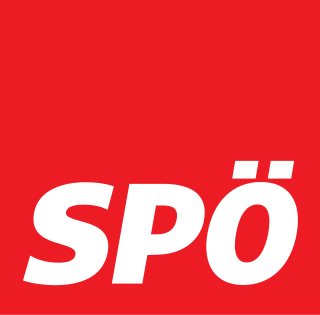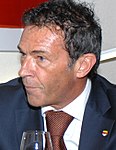
Early parliamentary elections were held in Austria on 24 November 2002, after internal divisions in the Freedom Party of Austria (FPÖ) culminating in the Knittelfeld Putsch led to the resignation of several leading FPÖ members. The result was a victory for the ÖVP, which won 79 of the 183 seats, the first time it had been the largest party in the National Council since 1966. It continued its coalition government with the FPÖ, which had lost almost two-thirds of its seats. Voter turnout was 84.3%.

Parliamentary elections were held in Austria on 3 October 1999.

Early parliamentary elections were held in Austria on 17 December 1995, after the Grand Coalition between the Social Democratic Party (SPÖ) and Austrian People's Party collapsed over disagreements about the budget. The SPÖ remained the largest party in the National Council and the Grand Coalition was reformed. Voter turnout was 86.0%.

Parliamentary elections were held in Austria on 7 October 1990. The Social Democratic Party won the most seats, and retained the grand coalition with the Austrian People's Party. Voter turnout was 86.1%.

Early parliamentary elections were held in Austria on 23 November 1986. They were called by Chancellor Franz Vranitzky of the Socialist Party (SPÖ), as he was not prepared to continue the coalition government with new Freedom Party leader Jörg Haider, who had ousted Norbert Steger at the party convention.

Parliamentary elections were held in Austria on 24 April 1983. The result was a victory for the Socialist Party, which won 90 of the 183 seats. However, the Socialists lost the outright majority they had held since 1971, prompting Bruno Kreisky to stand down as SPÖ leader and Chancellor in favour of Fred Sinowatz. The SPÖ stayed in office by entering into a coalition government with the Freedom Party of Austria, which at this point was a liberal party. Voter turnout was 92.6%.

Parliamentary elections were held in Austria on 6 May 1979. The Socialist Party won a fourth term in government, taking 95 of the 183 seats. Voter turnout was 92.2%. As of the 2017 elections, this is the most seats that an Austrian party has won in a free election.

Parliamentary elections were held in Austria on 5 October 1975. The result was a victory for the Socialist Party, which won 93 of the 183 seats. Voter turnout was 92.9%.

Early parliamentary elections were held in Austria on 10 October 1971, following electoral reforms which increased the number of seats in the National Council from 165 to 183 and increased the proportionality of the seat distribution. The result was a victory for the Socialist Party, which won 93 of the 183 seats, an absolute majority. Voter turnout was 92.4%. Socialist leader Bruno Kreisky remained Chancellor.

Parliamentary elections were held in Austria on 1 March 1970. The result was a victory for the Socialist Party, which won 81 of the 165 seats to become the largest party for the first time in the Second Republic, only two seats short of a majority. Bruno Kreisky of the Social Democrats became Chancellor at the head of a minority government that was tolerated by the Freedom Party of Austria in return for electoral reform that favoured smaller parties. Voter turnout was 91.8%. It was the first Socialist-led government since 1920, and the first purely left-wing government in Austrian history.

Parliamentary elections were held in Austria on 18 November 1962. The result was a victory for the Austrian People's Party, which won 81 of the 165 seats. Voter turnout was 93.8%. Although the People's Party had come up only two seats short of an outright majority, Chancellor Alfons Gorbach retained the grand coalition with the Socialists under Vice-Chancellor Bruno Pittermann.

Parliamentary elections were held in Austria on 10 May 1959. Although the Social Democratic Party received the most votes, the Austrian People's Party retained a bare one-seat plurality. The Communist Party of Austria lost its remaining three seats and has not returned to the National Council since. Voter turnout was 94.2%. The grand coalition that had governed the country since 1945 remained in office, with People's Party leader Julius Raab as Chancellor and Socialist leader Bruno Pittermann as Vice-Chancellor.

A legislative election to elect the members of the 11th Imperial Council were held in Cisleithania, the northern and western ("Austrian") crown lands of Austria-Hungary, on 14 and 23 May 1907. They were the first elections held under universal male suffrage, after an electoral reform abolishing tax paying requirements for voters had been adopted by the Council and was endorsed by Emperor Franz Joseph earlier in the year. However, seat allocations were based on tax revenues from the States.

Parliamentary elections were held in Austria on 9 November 1930. The Social Democratic Party emerged as the largest faction in the National Council, with 72 of the 165 seats. Voter turnout was 90.2%.

The German People's Party was a German nationalist political party in Austria.

The German Freedom and Order Party was a political party in Austria.

The German-National Party was a political party in Austria.

The German Democrats was a political party in Austria.

The Styrian Farmers' Party was a political party in Austria.

The Civic Workers' Party was a political party in Austria.















